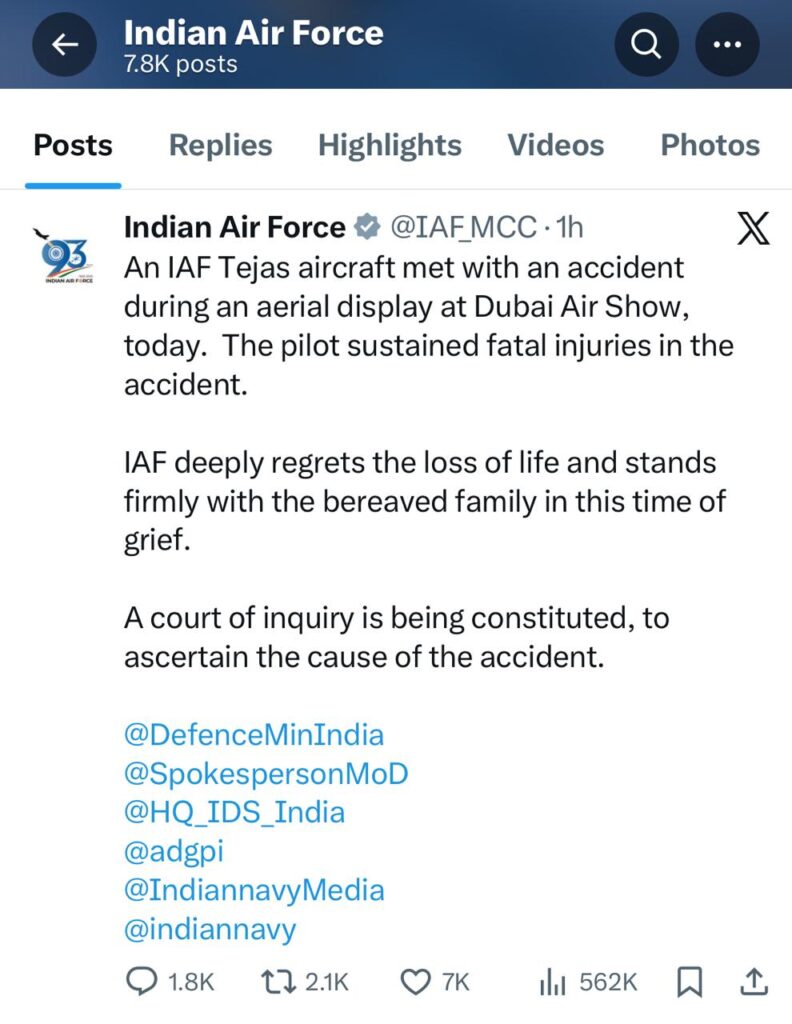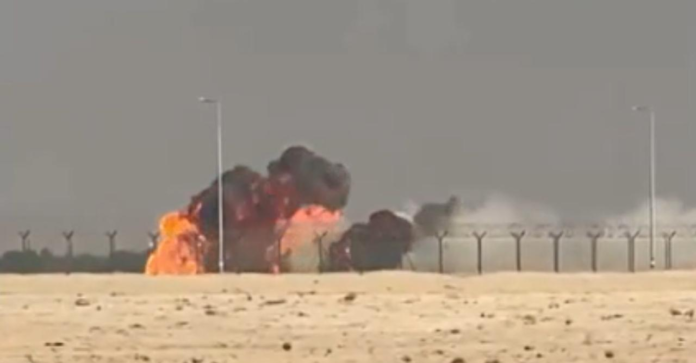Romiya Das
What began as a thrilling celebration of aviation turned into tragedy on Friday when an Indian Air Force HAL Tejas fighter jet crashed during a demonstration at the Dubai Airshow, resulting in the death of the pilot. The accident occurred around 2:10 p.m. local time at Al Maktoum International Airport, leaving spectators stunned as thick black smoke rose into the sky.
Emergency teams responded immediately, with firefighting crews rushing to control the blaze. Witnesses described seeing the jet, which had been performing aerobatic maneuvers, suddenly lose altitude before colliding with the ground and erupting into flames. Families and aviation enthusiasts, who had been cheering just moments earlier, watched in disbelief as the scene unfolded.
The Indian Air Force (IAF) confirmed the pilot’s death in an official statement and announced that a court of inquiry will be established to investigate the circumstances surrounding the crash. The IAF expressed its condolences to the family, calling the loss a “deep tragedy” and noting that the pilot had been a highly trained and courageous officer.

The HAL Tejas is India’s indigenous lightweight multi-role fighter jet, jointly developed by the Aeronautical Development Agency (ADA) and Hindustan Aeronautics Limited (HAL). It was designed as part of India’s “Make in India” initiative to reduce dependency on imported military aircraft.
The aircraft features a delta-wing design and is powered by a GE F404-IN20 turbofan engine, enabling high maneuverability and speed. The upgraded Mk‑1A variant features modern systems, including AESA radar, advanced electronic warfare capabilities, air-to-air refueling, and increased indigenous content. The aircraft is also fitted with a Martin-Baker zero-zero ejection seat, allowing pilots to eject safely even at low altitude and zero speed.
The Tejas is intended to serve both air defense and ground-attack roles. Despite its advanced design and capabilities, this incident marks only the second serious crash involving the aircraft. In March 2024, a Tejas jet crashed during a training mission in Rajasthan, but the pilot survived after ejecting successfully.
The crash comes at a pivotal time for India’s defense industry. The Tejas program is central to India’s efforts to modernize its air force while fostering domestic aircraft production. Earlier this year, the Ministry of Defence finalized a contract for 97 additional Tejas Mk‑1A jets, with deliveries expected to begin around 2027.
While the Dubai Airshow remains one of the world’s premier aerospace exhibitions, attracting defense delegations and commercial deals, the incident has cast a somber tone over the event’s final day. The accident serves as a stark reminder of the risks associated with showcasing cutting-edge military technology.
In the aftermath, social media speculation suggested a possible oil leak on the aircraft days before the crash. However, the Press Information Bureau (PIB) clarified that these claims were inaccurate, stating that the footage circulating actually showed routine drainage of condensate from the aircraft’s environmental control system — a standard procedure in humid conditions.
Aviation analysts have emphasized that the IAF inquiry’s findings will be closely watched, as they may influence confidence in the Tejas platform, both within India and among potential international buyers.


